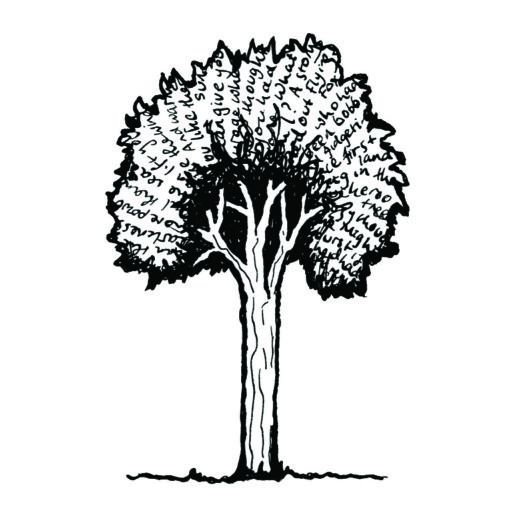Today’s post gives you another sneak preview of the Riverina Grassland colouring book, and also describes the collaborative process I use to tell ecological stories through art.
One of the things I love about my work are the discussions I have with collaborators about the species, ecosystems, interactions and land management practices they want to see depicted in the artwork. I always learn new things that expand or challenge my existing understanding of Australian ecology. And I get great satisfaction from observing the plants, animals and landscape, combining this with ecological ideas or theories, and then trying to bring it all to life in a picture.
A conversation about a colouring book
So tell me… what sort species would you like in this colouring book? Obviously, the Plains Wanderer is important?
Yes, maybe one or two pages with the Plains Wanderer… Perhaps illustrating its ideal habitat. Which is most vegetation less than 5 cm high, with some bits over 30 cm high (Plains Wanderers like a clear view around them so they can spot predators).
Ok, a side-view could show that, from the perspective of the Plains Wanderer:

Male Plains Wanderer and chicks, with a stubble quail, nankeen kestrel and banded lapwing, plus pale beauty-heads (Calocephalus sonderi), bluebells (Wahlenbergia sp.), rough burr-daisy (Calotis scabiosifolia), lichen, speargrass (Austrostipa scabra) and windmill grass (Chloris truncata).
In terms of percent cover it’s 50% bare ground, 40% plants and 10 % litter.
How about an aerial view to illustrate this?

Aerial view of ideal Plains Wanderer habitat structure. With fat-tailed dunnart, white-striped mastiff-bat, brown snake and tessellated gecko.
But the colouring book is about the Riverina Grasslands as an ecosystem, we don’t just want to focus on the one species…
Great! So I could include lots more birds, flowers, animals…
Typical grassland birds like the Australian pipit, brown songlark, ground cuckoo-shrike, banded lapwing, Australian pratincole and black-shouldered kite.
Trees?
Not really, it’s mostly grassland. The occasional boree or black box or cypress pine is ok
How about some sheep and a kelpie? It’s a working landscape, after all.
I really like that idea! And farm buildings and windmills.

A typical day out on the Riverina Grasslands, in lambing season?
What about a page of reptiles… What sort of reptiles do you get out here? Brown snake, bearded dragon, goanna?
Yes, yes and yes, the sand goanna, not the other goannas. Also the tessellated gecko and the hooded scaly-foot.

Some Riverina Grassland reptiles: brown snake, curl snake, sand goanna, eastern hooded scaly-foot, tessellated gecko, shingleback (or stumpytail, or sleepy lizard, depending where you’re from) and bearded gecko.
Feral animals and weeds?
Yes, rabbits and foxes. And weeds like boxthorn.
What about kangaroos hopping across the landscape?
Love it!
What about a white-winged fairy wren? Everyone loves fairy-wrens.
Hmm, not really a grassland bird. In lignum, maybe.
Here’s a rough draft… what do you think?
Basically brilliant – thank you – our comments are in red.

Centre spread rough draft

Final centre spread – left page.

Final centre spread – right page.
This book is one of three art commissions I’ve been working on recently that tell ecological and/or wildlife management stories through pictures (you’ll hear more about the other commissions in future posts).You can read more about how the Riverina Grassland colouring book was created in How to draw a grassland – Part One and How to draw a grassland Part 3: What lies beneath?
Do you have an ecological story that you’d like to tell in pictures? If so, I’d love to hear about it, and maybe we can find a way to bring your story to life 🙂

Love this latest grassland work! Tying in a productive landscape with our unique wildlife is key to its conservation 🙂
Thanks Annie 🙂 And the great thing about Plains Wanderer conservation is that some level of grazing is needed to maintain its ideal habitat structure, so running sheep can certainly be compatible with Plains Wanderer recovery. But I’m sure you would have already known that! Thanks for reading and commenting.
Another successful endeavour! Great work Paula.
Thank you Sue 🙂
Lovely art.
Thanks Sherry 🙂
I love the work-through of the process here – it’s so enlightening! Also your illustrations are gorgeous as always.
Hi Edin, thanks 🙂 . Sometimes I don’t know what to write for a post, but just describing how a picture came to be can be a story in itself.
The only frustrating thing about this post is that the eventual product won’t (?) be for sale (to us). It’s looking really good already and we are still enjoying colouring Bimblebox Wonderland. Thanks for giving us a sneak peak, Paula.
Thanks Mel, glad you like it 🙂 . Yes I won’t be selling copies of this one, it’s a commission for the NSW Government. But I will find out if any copies will be available for sale elsewhere. Cheers, Paula
Great pictures Paula! I particularly love the idea of drawing the scene from overhead. And the way you’ve grouped the lizards and snakes looks just wonderful.
Thankyou kindly Nicole :). It was fun to take the very specific (structural) habitat requirements of the Plains Wanderer and express these in a picture. And every time I get a chance to observe our reptiles closely I am impressed by their beauty and variety. Cheers, Paula
Hi Paula,
I’m enjoying how your illustrations came into being. Good descriptions!
It was nice to see Raymond again for the flying visit! We’re still thinking about driving up to see you one time. No dates set as yet. I’ll have to bring my sketchbook and watercolour pencils!
Hi Paula I’m glad you’re enjoying my ramblings. We’re having some glorious weather here right now, perfect for a visit :). Cheers, Paula